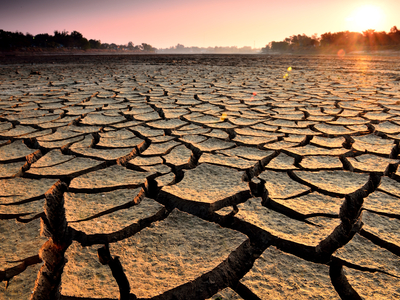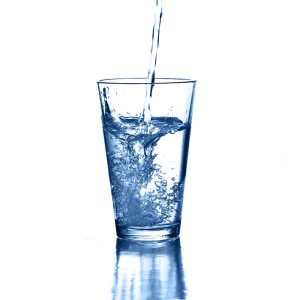Irrigation Ponds
Farm Irrigation Pond Water Management
Water management has reached crisis levels in the agriculture industry. California is in its worst drought in 500 years. April 1, 2015 Governor Brown directs first ever statewide mandatory water reductions and $1 billion emergency drought package for the worst drought conditions since.
The two critical factors affecting the agricultural industry irrigation ponds are the loss of water due to evaporation and the cost of controlling algae blooms and the environmental effects of the chemicals to control them.
The primary contributing factor to evaporation is sunlight and temperature that is attributed to climate change according to the USGS.
Our Saturn Disc pond float provides a 99% total eclipsing of the sun over a pond water surface of any size. Eliminating the two most costly factors of agriculture pond management, evaporation and algae blooms, are the primary concerns for this industry today. Evaporation abatement by the Water Conservation Solutions International hexagon disc reached a 96.2% reduction at the Center for Irrigation Technology of California’s Fresno State University. Sunlight is the most contributing factor to the growth of algae in an irrigation pond followed by the nutrient content of the water.
Please use our evaporation cost calculator to see how much water you are losing form your pond or reservoir.
Note: This data is from the California Irrigation Management Information System (CIMIS) evaporation pan monitored at The Center for Irrigation Technology of California’s Fresno State University and does not take into account thermal stratification effects of deep bodies of water.
The Saturn Disc Aquatic Float prevents the following:
- Evaporation – The Saturn Disc Pond Float Reduces evaporation by over 95%. This results in substantial energy conservation and augmented energy efficiency. Logic: The Saturn disk reduces evaporation by over 95%, thus meaning that much treated water will be conserved. This means that the facility will not need to compensate for the loss in supply to meet demand requirements.
- Contaminant and Pathogen Propagation – By deterring birds & wildlife, the spread of pathogens such as Cryptosporitium are diminished. Birds are known to transmit H5N1, Cryptosporidium meleagridis, Giardia lamblia, microsporidia, Salmonella, Campylobacter & Mycobacterium spp. Birds are deterred by the matte black light-absorbing color. Also, since view of the water is obstructed, animals do not have access and therefore, contamination through feces and saliva is avoided, resulting in cleaner, purer water.
- Algal Blooms – Autotrophic microalgae are prevented from blooming as they rely on photosynthesis which is prevented by obscuring the sunlight. There are over 300 species of blooming algae, 25% of which are toxic and are a substantial threat to water safely. An example of a harmful algal bloom is Cyanobacteria (Blue-Green Algae)
- Chemical Reactions – Chemical reactions that are contingent on sunlight are prevented due to the concealment of the sunlight. An example of a chemical reaction is when naturally occurring Bromide is combined with Chlorine (added during the treatment process) which react after exposure to sunlight to produce Bromate, a known carcinogen.
Irrigation Statistics
100 %
GREEN, ECOLOGICALLY & FISCALLY RESPONSIBLE
5.76
ACRE-FEET PER ACRE/PER YEAR CAN BE SAVED BY USING THE SATURN DISC AQUATIC FLOAT
55 MILLION
ACRES OF IRRIGATED FARMLAND IN THE UNITED STATES
454 MILLION
2014 AGRICULTURAL GROUNDWATER PUMPING COSTS IN CALIFORNIA
Evaporation
Evaporation is the largest threat to agricultural irrigation ponds. In a world with a growing population and shrinking resources, conservation of water is vital.
Many areas of the United States, especially the West, currently face water supply issues. The amount of water available in these areas is already limited, and demand will continue to rise as population grows. The Southeast and West (especially the Southwest) have experienced less rain over the past 50 years, as well as increases in the severity and length of droughts.
In the western part of the United States, future projections for less total annual rainfall, less snowpack in the mountains, and earlier snowmelt mean that less water likely will be available during the summer months, when demand is highest. This will make it more difficult for agriculture to properly irrigate their crops.
The Saturn Disc Water Cover reduces evaporation by 95%, resulting in greater energy conservation/efficiency and a sustainable approach to water conservation.


Contamination
Agricultural irrigation ponds are susceptible to a wide variety of contamination including algae and bird and animal waste. Bird and animal waste as well as debris can clog filters and can cause damage to intake systems. The Saturn Disc Aquatic Float not only reduces contamination of water, but also protects irrigation systems from becoming clogged.
Conservation
- By decreasing evaporation, the Saturn Disc Aquatic Float reduces the amount of energy consumed.
- By inhibiting the growth of autotrophic algae, and preventing the formation of Bromate, the Saturn Disc Float prevents irrigation systems from having to drain their tanks or invest in treatment such as adding Copper to combat algae.
- The Saturn Disc Float is fully RECYCLABLE and REUSABLE! Depending on the condition of the floats, they can be 100% recycled.
- They can also be used in short-term applications since the floats are easily removable and transportable. By preventing the escape of gases, the Saturn Disc Float helps build a GREENER, more sustainable tomorrow.

Why Use The Saturn Disc Aquatic Float?
- Increases protection against GROUNDWATER OVERDRAFT.
- Protect against debris and refuse.
- Ponds can be shallower.
- Reduces dependence on local resources.
- Allows for the capture of rainwater.
Effects of Groundwater Overdraft
- LAND SUBSIDENCE
- Increasing energy requirements
- Water quality problems.
- Salt water intrusion.
- Concentration of natural and manmade pollutants.
- Ecological detriment.
- Cost of remediation.
Contact Want More Information?
Contact Our Specialized Irrigation Ponds Sales Team
